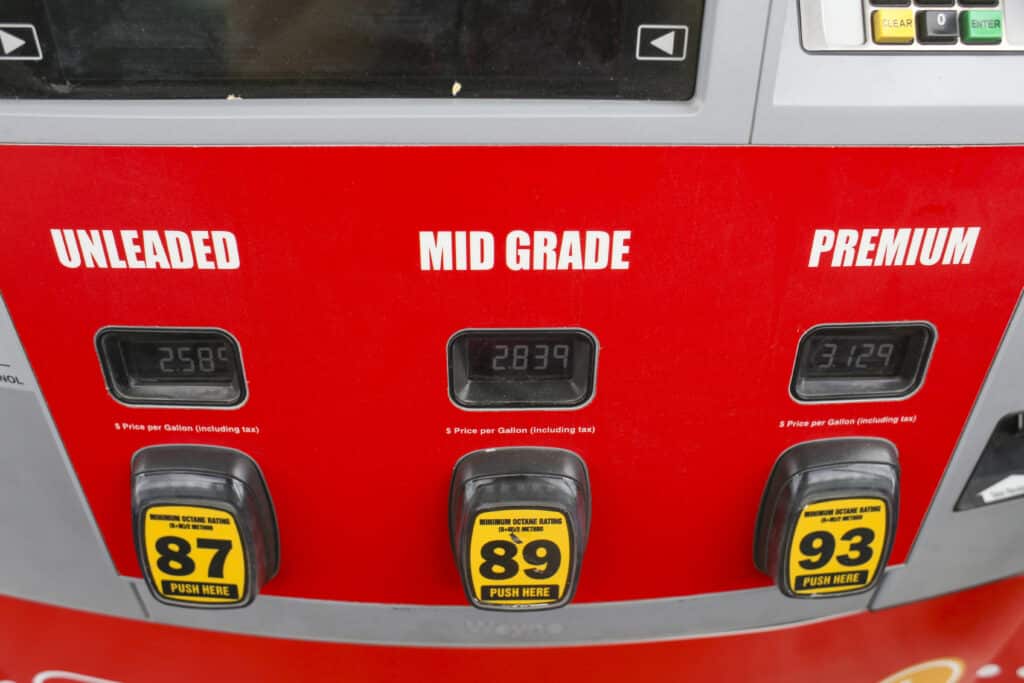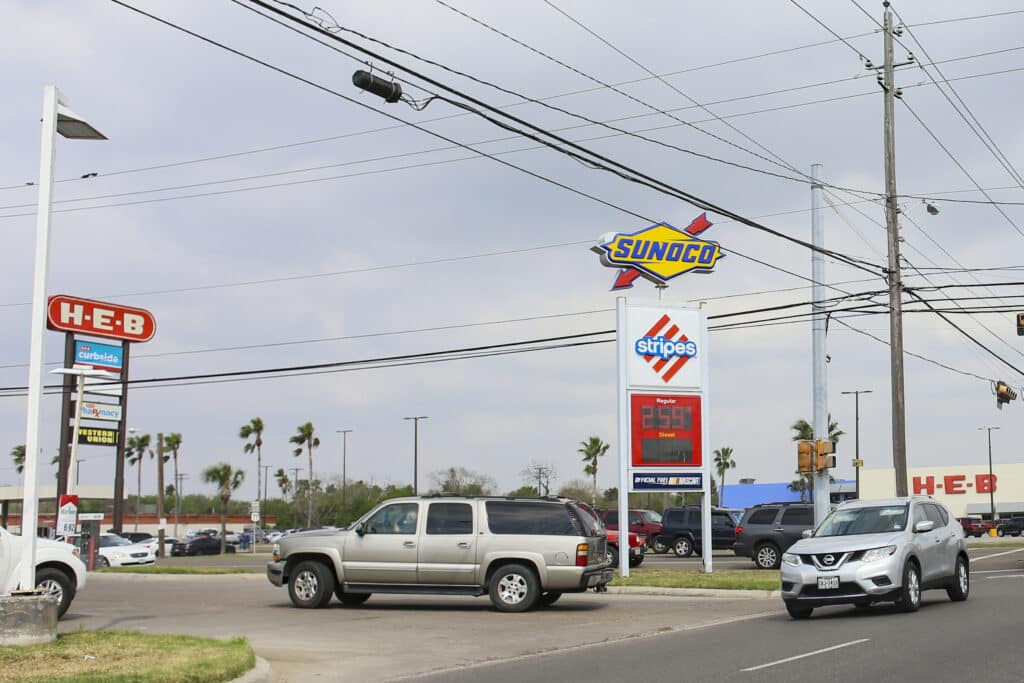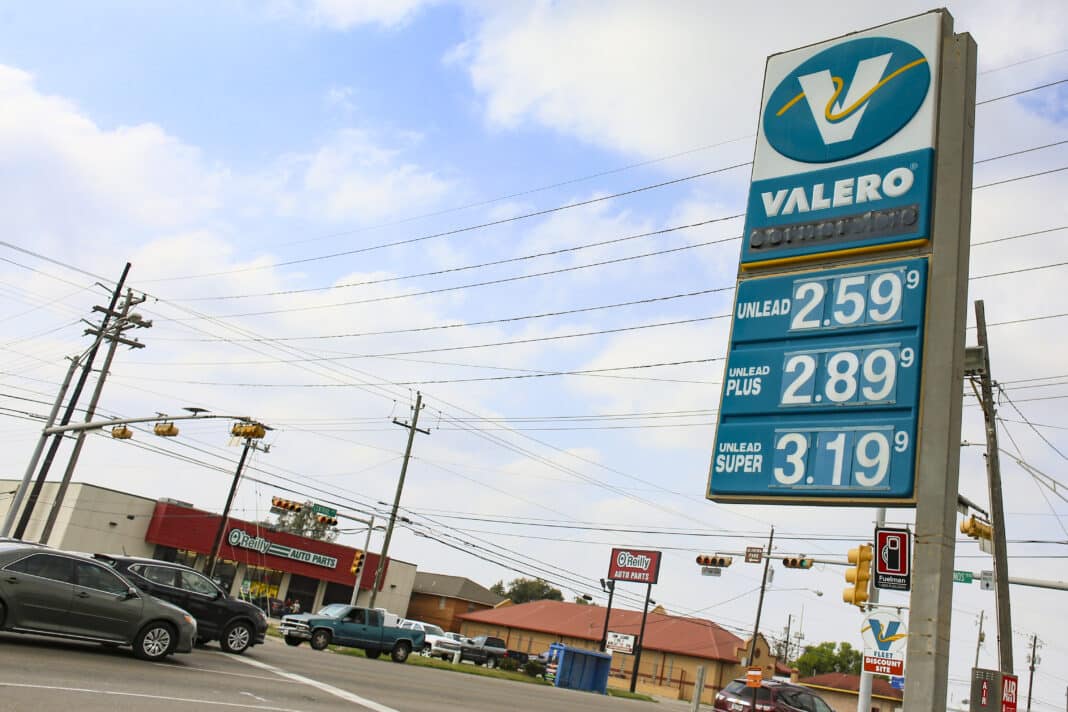Enjoying cheap gasoline during an economic downturn is a guilty pleasure, since it means benefiting in a way from an ailing economy in which people are suffering.
The flip side is that when the economy gets better and gas prices go up again we shouldn’t complain too much, because, well, things are getting better even it costs more to fuel up. But that’s not what’s happening now. What’s happening now, in the words of GasBuddy.com Senior Petroleum Analyst Patrick DeHaan, is a “runaway rally.”
The last time the Herald checked in with DeHaan was in early January, when a gallon of regular gas could be had for as little as $1.76 in Brownsville. On Tuesday the lowest price to be had in the Lower Rio Grande Valley, according to GasBuddy’s website, was $2.50 at a Harlingen Sam’s Club.
The trend is not yet mature, he said, which means there’s still plenty of room for prices to keep rising. In January DeHaan predicted something along these lines, anticipating a spring rally in oil and gasoline prices, just not quite so much or so soon.
“At the start of the year I probably would be considered crazy for mentioning the prospect of $3 a gallon gas,” he said. “In fact we did that, on Jan. 5, when we released our annual forecast. We hinted at the possibility of a $3-a-gallon national average.
“Some respected oil analysts said we were crazy, that’s impossible, it’s not going to happen. And here we are and the national average is just 13 cents away and we’re only in March.”

Still, he doesn’t think anybody could have foreseen the extent of the current rally, driving by soaring demand for fuel as Americans have rediscovered the open road now that the pandemic seems to be winding down, and not enough domestic or foreign production to keep up with rising demand.
“The American automobile has been parked,” DeHaan said. “That is the one thing that Americans seem to gravitate too. It’s the one sense of normal, is getting out and seeing things. We’ve been on lock-down. The floodgates are opening. The vaccine is allowing Americans to do things.”
While demand for gasoline is nearly back to pre-pandemic levels, oil production is nowhere close, and nowhere is that truer than in Texas, he said. Plummeting demand for oil last year due to the global pandemic has left producers in a weakened state, with thousands of workers laid off, wells idled, refineries mothballed and even bankruptcies among some smaller producers, DeHaan said.
So the United States and the world is again, at least for the time being, dependent on the Organization of the Petroleum Exporting Countries (OPEC), which so far appears in no hurry to boost production.
“OPEC met two weeks ago and didn’t increase production,” DeHaan said. “They’re going to meet in another two weeks from now. If there’s no meaningful increase, man, the sky’s the limit. … We’ll have to see what they do.”

OPEC’s decision was led by Saudi Arabia, which may be flexing its muscles a bit, he said. While U.S. intelligence agencies reported last month that the Saudi crown prince, Mohammed bin Salman, approved the 2018 murder of exiled Saudi journalist Jamal Khashoggi, no country including the United States has responded other than to condemn the assassination, DeHaan noted.
“Saudi Arabia is … saying don’t even try it because we’re going to squeeze you,” he said. “So there could have been some political posturing in this decision. …
“The key, fundamental difference between U.S. producers and OPEC is that U.S. producers are privatized companies that respond to market fundamentals. OPEC can open the spigot whenever it pleases because all of the members are state-owned oil companies, so they operate not necessarily on fundamentals but whatever the government agenda is.”
If lots more oil isn’t pumped out of the ground in the very near future U.S. consumers are going to have tough time at the pump this summer, DeHaan said. Gas prices won’t necessarily hit record highs, but they could reach “an uncomfortable level, especially as millions of Americans are still unemployed,” he said.
High oil and gasoline prices can signal a healthy economy, though that’s not the whole story behind today’s situation, with a barrel of West Texas Intermediate Crude going for around $65 on Tuesday.
“There is a happy medium for oil prices,” DeHaan said. “Given the gravity of the situation, the economic duress that many are facing, I think we’re at the top side of that line. Generally in a normal economy, where things are humming and everything’s open, sure, $65 oil, that’s not bad. But you’re talking about $65 oil right now only because U.S. production is so limited, refining capacity is limited and demand continues to go up.”




